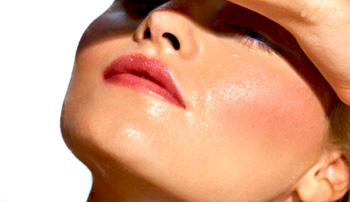 New Delhi, Jul 16: Rashes and other skin problems are very common during the monsoons due to damp, warm and humid climate.
New Delhi, Jul 16: Rashes and other skin problems are very common during the monsoons due to damp, warm and humid climate.
To deal with various skin problems, experts usually advice homemade remedies such as applying ice or fruits on the face. According to experts, applying a skin moisturiser, preferably a light-weight moisturiser, is a must irrespective of your skin type.
Navin Taneja, capital-based dermatologist shares a few tips to protect your skin from the weather`s harshness:
* Tea tree oil: Apply a mixture of tea tree oil and coconut oil. Reap in its benefits and bid adieu to rash and pimples.
* Aloe vera gel: Aloe vera is a beneficial curing agent for skin diseases caused by rain. It purifies the blood and has healing and soothing properties.
* Honey: Make honey a part of your beauty regime to get natural glow. Honey is seen as an ideal natural ingredient to do away with skin dryness. Women with sensitive skin can prepare a face mask made up of brown sugar, honey, olive oil and lemon juice.
* Fruits: Fruits like mango and pomegranate can be useful to clear scars and marks on your face and even to nourish your skin. Watermelon is good, if you mix it with milk powder and put it on the skin. It will help to cool the skin.
* Anti-fungal powder: Use an anti-fungal powder on all body folds to avoid any fungal infection.
* Moisturiser: Give a thumbs up to light moisturisers, though its excessive use will work against the skin as it will just sit heavily on the face and prevent skin from breathing.
* Calamine lotion: It can be used to treat anything from sunburns to itchy bug bites or rashes.





Comments
At tthe moment, there's one product which has been proven to hhelp you give uup smoking by; still smoking.
E cigarettes are generally a response to help so many social difficulties ( space
) the actual non stgop try to find meets along with
lighters, burn off pockets inside top fronts, social rebukes, discoloded
pearly white's, smelly breath, smoker's coughing, tarnished hands.
Aftrer advertising on Craigslist, he soon had a huge customer bzse in Cerritos and the surrounding areas.
Here is my web-site - joyetech eroll elektronik sigara: http://coogai.com/home/link.php?url=http://yatricar.com/author/flatoffi…
You - Tube arguably dominates its competitoors with more daily hits on its collective output
than any other video hosting provider. People are most interested in videos that answer onee or more questions they may have abhout your brand
or your products & services or that highlights a problem your business can soplve for them.
Tallk to them through a problem, the associated emotions, and then relate How to Make Money with Script Engage: http://gul.ly/5fbuu the product resolves each of them.
Sometimes, there might be difference on the prices of products sold online,
but regardless, you are paying for convenience. The creation died a sudden death, its principles
by no means realized, and through all those time individuals reproduced documents manhally using longhand.
Another nasty that should not go oon wood is anything that will damag
the polish oon it.
Also visit my web site; su kacagi tespiti bursa: https://www.youtube.com/watch?v=ToednXFnemk
My brother recommended I might like this website. He was totally right.
This post truly made my day. You can not imagine simply how much time I had spent for this info!
Thanks!
Here is my web blog; Chloe Jolie: http://www.itallnews.com/wp-content/plugins/wp-js-external-link-info/re…
Add new comment